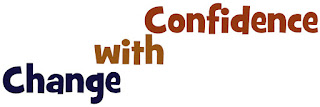- Describes what the book is about: Managing change
- Communicates an emotional benefit: Confidence in doing so
- Inspires further investigation: How do you confidently lead change?
 I have observed that leaders need the most help when they are faced with a question they can't answer based on their experience. Many either went with the first information they receive or relied on their gut instincts. Unbeknownst to them, they sent their team charging down a path full of potential landmines. What they needed was practical advice on how to make the best choices based on real-life experience.
I have observed that leaders need the most help when they are faced with a question they can't answer based on their experience. Many either went with the first information they receive or relied on their gut instincts. Unbeknownst to them, they sent their team charging down a path full of potential landmines. What they needed was practical advice on how to make the best choices based on real-life experience. Sven-Göran Eriksson, international football coach, has observed
that the “greatest barrier to success is the fear of failure,” and during big
business changes there are many things to fear: not knowing what to do or say, being a poor leader, failing and, of
course, looking stupid. My book provides advice to move beyond these fears to make the right choices. During a big change project, confidence is an antidote to fear.
Sven-Göran Eriksson, international football coach, has observed
that the “greatest barrier to success is the fear of failure,” and during big
business changes there are many things to fear: not knowing what to do or say, being a poor leader, failing and, of
course, looking stupid. My book provides advice to move beyond these fears to make the right choices. During a big change project, confidence is an antidote to fear. My title also includes a sub-title: "A Business Leader's Guide to Change Management," which identifies the audience for my book and what they are buying. Both parts of my title have provided focus for my book proposal and final edits.
I realize my publisher will have the final say on a title, but I am confident that the best title will be chosen. Just to be safe, I purchased the internet domains of changewithconfidence.com and changewithconfidence.ca so that there are no hiccups down the road. It is important to plan for the future. Phil















